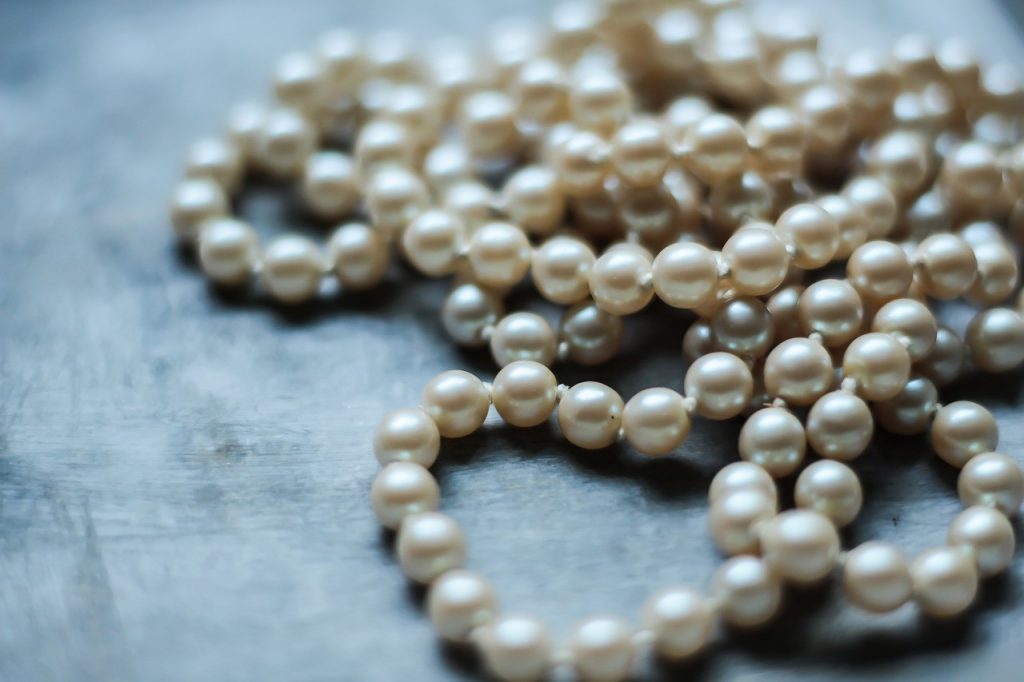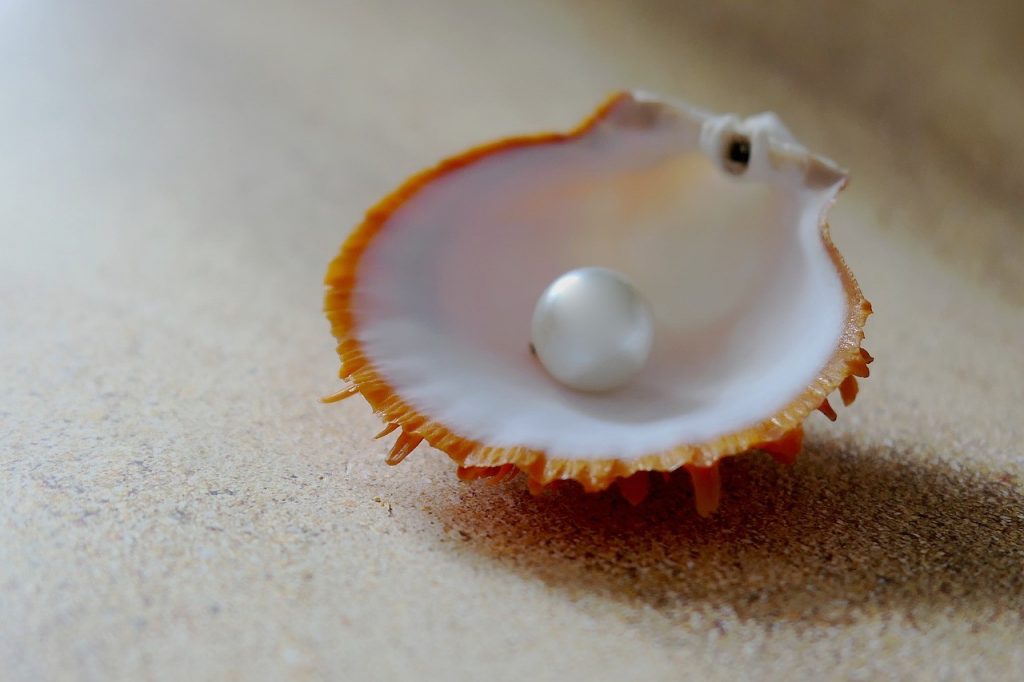Pearls are a classic, an evergreen that signifies purity and class. They have a bit of that old-fashioned charm that finds its place in the fashion of both young and old. Beautiful in every color it comes in, a pearl can make any outfit and person look more radiant. They are in high demand and it’s reflected in their price, which also makes them a great target for fakes, or at least for faux versions – imitation ones that sell for less.
It’s essential to know a real necklace, bracelet, or earring from a fake one, especially if you’re buying a pearl piece as a gift, so how to tell a real pearl necklace? We hope these 5 methods can help you find out. But first, what are pearls actually, and how do they come to be such beauties?
How pearls are made
Real pearls are considered organic gemstones since they are made by a living organism – mollusks. Small debris such as a grain of sand gets into the inside of the mollusk. Consequently, the mollusk tries to lessen the irritation by secreting a fluid called nacre, coating the debris and adding layers upon the grain, molding it with its tongue-like soft tissue until it becomes the shining beauty that we all know.
That’s how natural pearls are created. There are also cultured pearls that are going through the same process, only instead of debris getting into the mollusk shell on its own, by accident, it gets implanted there deliberately, artificially.
Imitation pearls or fake pearls are man-made, from various materials such as plastic, glass, mollusk shell, alabaster, cotton, etc. They are given the shimmering coating paint to resemble the real pearls. Some of them are easy to tell apart from the real pearls, but others (like some glass ones) are not that easily spotted. But there are ways to check, to be sure if the pearl you are holding in your hand is the real or fake one.
How to check if the pearls are real
Most of the methods for determining if the pearls are real or not are quite easy to understand and implement. Here we explained some of the most usually used methods.
Looking for Imperfections
Some imperfections you can see with the naked eye – the symmetry, size, shine, and overtones, and for some you need a magnifier to spot, like small ridges, blemishes, etc.
- Symmetry – Real pearls are not all perfectly symmetrical, round, unlike the fake ones that look more uniform, almost perfect, since they are made by machines.
- Size – It also varies among real ones, whereas the fake ones are all made the same size.
- Shine and overtones – Real pearls shine brighter than fake ones when exposed to the light. You should be able to see your reflection on the surface of the pearl. Fake ones look duller. Also, real ones have overtones in the color of the surface layer that give “depth” to the pearl, that you can see when exposed to the light. Since overtones are hard to produce in fake pearls, if your pearl has any overtone it’s real. But, keep in mind that some real pearls don’t have them, so this is not a definitive test.
- Ridges and blemishes – Real pearls will have some small ridges and blemishes under a magnifying glass, that make each pearl unique. That should tell you that you’re looking at a real one. Fake ones are made to look “perfect”, so they won’t have those tiny imperfections and you’ll know they are imitations.

Teeth test
You can check the pearls by slightly rubbing them against your teeth or against each other, to see if there’s any friction. There’s a grittiness due to the tiny imperfections, which look like tiny scales under the microscope, of the outer layer of the real pearls, both natural and cultured. That’s what’s making that friction. But there is none in the fake ones, they feel smooth when rubbed against the teeth.
Sometimes the real pearls can be polished in such a way that gives you that non-gritty feel when rubbed against the teeth or each other, so more tests should be done to confirm the authenticity of the pearl.
Look around the drill hole
Holes in real pearls are smaller and more clearly defined than the holes in fake ones. Fake pearls have more rough edges around the holes. When magnified, fake pearls have a thin coat of paint that can be seen around the hole edges, they can also be slightly chipped or with tiny flakes, or if worn out a lot, there can be peeled coat parts as well.
Weight of the pearl
Real pearls are much heavier than fake ones. If you bounce them a little in your hand you can feel the real ones being heavier compared to the fake ones. Even if they are bigger than the real ones, if they are made from plastic or lighter glass they’ll be lighter.
Only in the case of the solid glass imitation pearls this test doesn’t give you the definitive answer, since those are heavier than the real ones. So you can compare the weight of the pearl you have with the one you already know is fake or real and see if it’s lighter, heavier, or the same, and do some additional tests as well, since this one is not enough for appraisal.
Temperature
You can take the pearl into your hand to feel its temperature. Real ones are colder to the touch at first but are warmed up by your skin in a couple of seconds. So you should test the pearl that was not worn on the skin for at least a little while. Fake ones made from plastic are warmer at the first touch because they are room temperature, but fake glass ones are not. They are colder but are not quick to warm up to the skin temperature like real pearls are.

Final thoughts
These methods can be very useful when trying to establish the authenticity of pearls, but they are not flawless. They have their exceptions to the rules, room for error, and so on. Therefore it would be best if you could take the pearls to the professional appraiser, for there are more precise methods they can use for determining the genuineness. If you decide to take your pearls to the trained professionals, you’ll get a real, informed, certified assessment.
Another thing that you should pay attention to is how you’re cleaning and taking care of the pearls. Any harsh abrasive cleaners or a steam cleaner are not recommended, because they can ruin the pearl surface. Clean it with a soft clean cloth and they’ll shine like they’re new.












